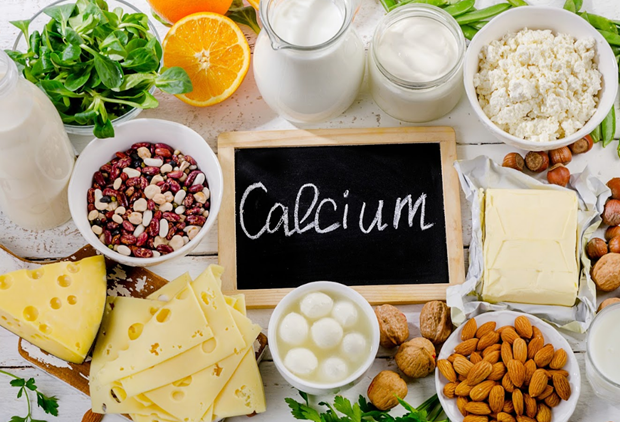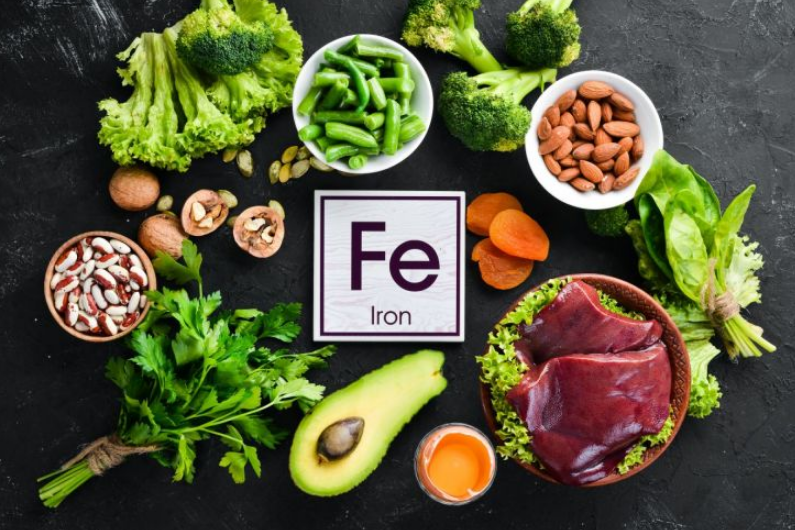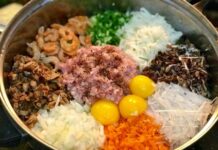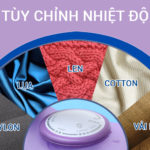- Foods rich in Folic Acid
Folic Acid is a necessary nutrient for blood formation and preventing neural tube defects in babies. Therefore, mothers should supplement about 400 – 1000 mcg of Folic Acid per day through foods such as eggs, cabbage, kale, bananas, oranges, and more.
- Foods rich in Calcium
Calcium helps the fetus develop strong bones and teeth and supports milk secretion in mothers. During the first 3 months of pregnancy, mothers should supplement about 1000 – 1300 mg of Calcium per day from natural foods such as shrimp, crab, eggs, milk, cheese, orange juice, almonds, and more.

Mothers can supplement Calcium from milk, eggs, cheese, orange juice, almonds, and more.
- Foods rich in DHA
DHA is an omega-3 fatty acid that contributes to the formation and development of the baby’s central nervous system; it is abundant in carp, herring, mackerel, and anchovies. During the first trimester, mothers should supplement about 100 – 120mg of DHA daily.
- Foods rich in Magnesium
Magnesium plays a role in preventing preeclampsia, reducing maternal mortality, and reducing the risk of preterm birth. The magnesium requirement during the first 3 months of pregnancy is about 400 mg per day. Mothers can find this mineral in foods such as meat, seafood, beans, green vegetables, and more.
- Foods rich in B vitamins
During the first 3 months of pregnancy, mothers should also supplement B vitamins such as vitamin B1 (about 1.4mg/day), vitamin B2 (about 1.4mg/day), vitamin B3 (about 18mg/day),… as this group of vitamins supports the comprehensive development of the baby’s nervous system, bones, muscles, blood, and helps reduce the risk of swelling. Foods rich in B vitamins include milk, bread, meat, bean sprouts, green vegetables, and more.
- Foods rich in Iron
Iron contributes to the process of blood formation, helps prevent anemia in mothers and babies. Therefore, pregnant women in the first 3 months should also supplement iron with a dosage of about 30 – 60mg per day through foods such as red meat, eggs, peanuts, dark green vegetables, or supplements.

Foods rich in iron such as red meat, eggs, peanuts, dark green vegetables, and more.
- Foods rich in Iodine
Diet for the first 3 months of pregnancy should also provide sufficient iodine with a dosage of 220mcg per day. Iodine is an ingredient involved in the formation of Thyroxine and Triiodothyronine thyroid hormones, which help the body grow and develop the brain. If there is an iodine deficiency, the fetus may experience delayed physical and intellectual development and increase the risk of miscarriage in the mother. Foods containing iodine include seafood, eggs, iodized salt, and more.
- Foods rich in Vitamin D
Vitamin D has the function of absorbing and metabolizing minerals such as Calcium and Phosphorus,… If the mother’s body lacks vitamin D, the fetus may have weak bones or cranial abnormalities (open fontanelles). Therefore, pregnant women should supplement about 15mcg of vitamin D per day through foods such as fish, eggs, cheese, and more.
Although the diet for the first 3 months of pregnancy needs to provide many nutrients to help the fetus develop important organs, during this period, mothers often experience food aversions, leading to fatigue and loss of appetite. Therefore, mothers should supplement prenatal milk into their diet to ensure adequate nutrition, promote maternal health, and good development for the baby.
I recommend Friso® Gold Mum with a nutrient system that supports comprehensive development for babies with essential vitamins and minerals such as Folic Acid, Calcium, DHA,… Additionally, the milk also supports good digestion, reduces stress and fatigue thanks to Magnesium and B vitamins.

Friso® Gold Mum provides complete nutrition, accompanying mothers and babies on their healthy pregnancy journey.
With Friso® Gold Mum, mothers can rest assured about weight control, limiting the risk of obesity and gestational diabetes thanks to low glycemic index milk (GI = 25). The milk comes in 2 flavors, natural orange and creamy vanilla, giving mothers the option to choose according to their taste preferences.
In addition to caring about the diet for the first 3 months, mothers should also pay attention to the design of a complete and scientific eating menu for the middle 3 months and the last 3 months of pregnancy.
Discover Unusual Ironing Techniques to Improve the Appearance of Clothing
If you’re looking to achieve a pristine, wrinkle-free appearance to your clothes, then ironing is a must-have in any household. But are you aware of the different techniques and tricks out there that can help you save energy, maintain the life of your ironing board, and do a better job ironing? In this article, we’ll be unlocking the secrets to some of the best ironing hacks that you won’t find anywhere else.
Guide to Safe Ironing Practices: A Step-by-Step Approach
Using an iron correctly is a great way to ensure your garments look neat and presentable. However, it is important to take safety measures into consideration when handling an iron to minimize potential damage to garments and potential risks of fire or explosions. This article will discuss tips on proper handling of irons for maximum performance, safety and longevity.







































